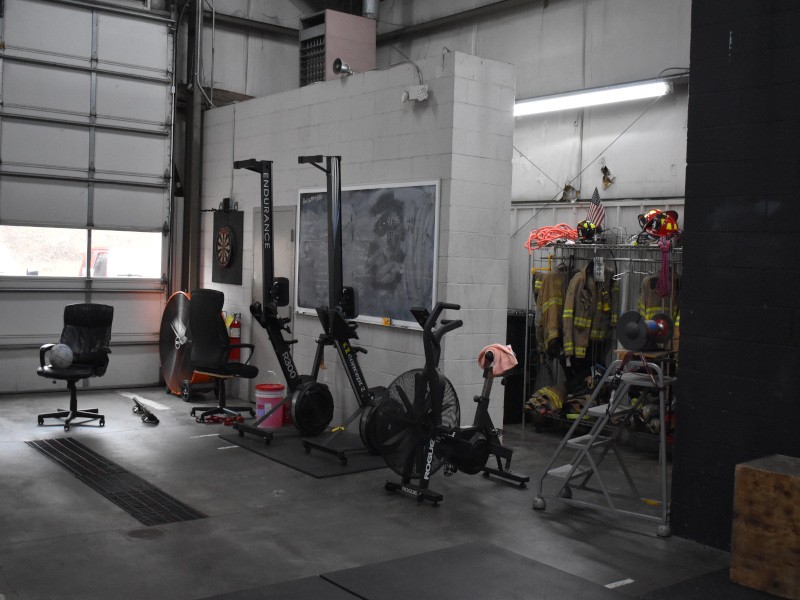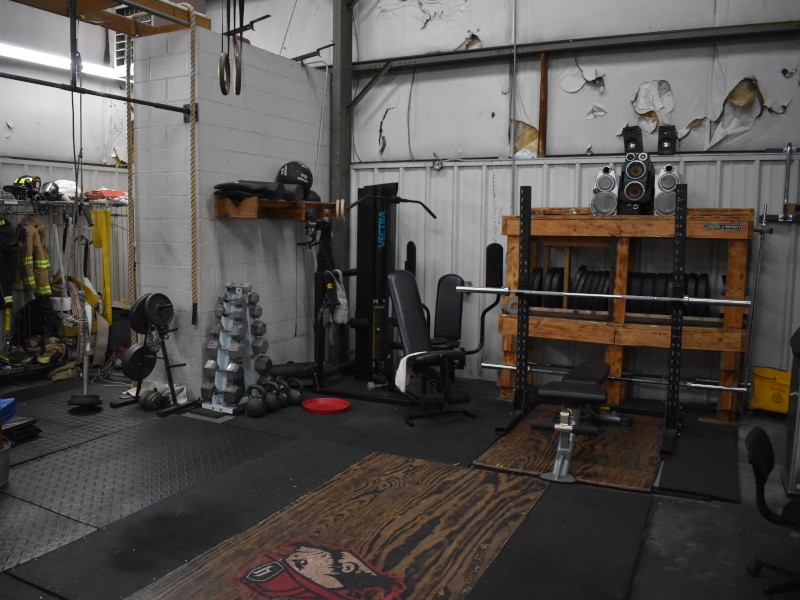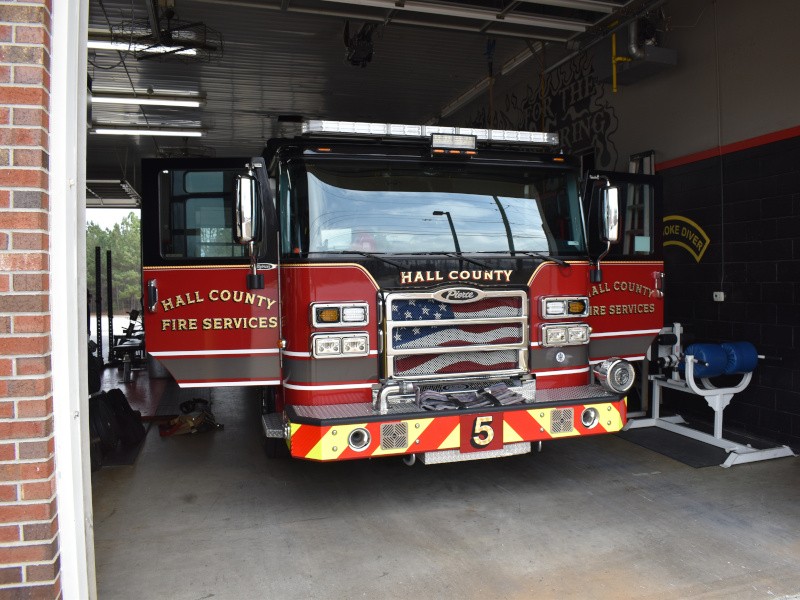This is the first in a two-part series looking at the role firefighters play in the Hall County community.
Station 5 of Hall County Fire Rescue responded to 357 calls in Dec. 2022. That’s an average of 11.5 calls per day. With 85 percent of the overall call volume being medical incidents, the department cross-trains its firefighters to be skilled in both combating fires and administering medical aid in emergency situations. This creates what many first responders regard as their primary objective and motivation: saving lives and helping members of the community.
HCFR Public Information Officer Kimberlie Ledsinger accompanied AccessWDUN on a ride-along with the fire department, visiting several stations throughout the county and seeing first-hand how the men and women of the department respond to emergencies.
“Maximum is 90 seconds, they're pretty quick about their turnout time,” Ledsinger said. “And then they normally get dressed on the truck. So all their equipment is pre-loaded, they're ready to go at all times, even the firetruck doors are open. So just limiting even those seconds that it takes to do those things makes the response time quicker.”
“Turnout time” refers to the length of time it takes for responders to go from any activity they are doing to being in the truck and on the way to a call. Ledsinger said in many cases, responders are able to turnout a good deal faster than the maximum benchmark of 90 seconds.
On average, responders are able to be on-scene in seven minutes once a call comes in. Officials say this number is averaged out across engines and battalion chiefs coming in from all around the county. On a typical call, the closest station will respond first, which allows firemen and medical personnel to be on-scene very quickly.
Every station visited during the ride-along featured some form of weight lifting or physical fitness area for responders to exercise in during downtime. There were weight benches, dumbbells, weight plates, kettlebells, pull-up bars and other strength-focused equipment. Additionally, there were stationary bikes, jump ropes, treadmills and even rope repelling and climbing exercises available for responders to train on.
“That is a really big part of firefighting, you have to be able to lift heavy things and you have to be able to be on an air tank for an extended amount of time, which does come in recruit training,” Ledsinger said. “They are trained on all of that but also just keeping your endurance up is really important, keeping your strength up. A lot of their exercise is functional fitness.”
During every shift, it is required that every firefighter participates in at least one hour of exercise, emergencies permitting. This can come in many forms, but a large portion of the responders often spend more than an hour exercising, depending on the call volume for the day.
Physical fitness is a major aspect of the job, which recruits understand when they apply. During the ride-along, it was apparent that many responders enjoyed the physical portion of their work, taking great pride in their diet and strength training in order to perform at the highest level when emergency situations arise.
“We have a physical assessment test that we do for all of our recruits before their interviews,” Ledsinger said. “And basically, they have to go through different exercises to just show that they're fit for the job. It's not timed, so our requirement is that they finish it. And obviously, through recruit school, you're working out for two hours a day, and that's not including the fire skills, so you're constantly burning calories. And by the end of recruit school, they're able to run further than they ever thought they could, they can lift more than what they started with.”
Shifts with Hall County Fire Rescue operate on a rotating basis, with each shift lasting 24 hours. There are A, B and C shifts, so a firefighter will work 24 hours and then have the next 48 hours off. During their 24 hours on the clock when they aren’t responding to emergency calls, firefighters spend their time in several different ways. They complete cleaning duties at their station, cook meals, exercise, participate in training scenarios, check on vehicles and emergency equipment, and if there’s time, sleep. Given that calls come in at any time, responders rarely get a full night’s rest while on shift.
At Station 5 in Hall County, firefighters have created a shed featuring a window-sized entrance with a small portion of a ladder leading inside. In the shed, there are several fog machines and walls set up so they can practice climbing a ladder, entering a structure with zero visibility and feeling their way down corridors. They even have several sizes of training dummies that weigh different amounts so they can practice extracting a person from a burning building. They complete this training with all their gear on, including air tanks and masks.
Another exercise many of the responders participate in is what they call “throwing ladders.” At Station 5, there is a wood board nailed halfway up a tree with a black X spray-painted in the center. Responders will routinely practice running to the location with a ladder, then hoisting and throwing the ladder up so the top hits directly on the target mark. This invaluable skill comes in handy when a building is engulfed in flames, structural integrity is questionable, and precise movements are the only way to save someone from the upper levels. Firefighters state that when situations are intense and people are in danger, they rely chiefly on their training and muscle memory to take over and get the job done.
Being a first responder is rarely what many consider “safe.” The men and women of the Fire Rescue often put themselves in harm's way to save the life or well-being of another.
“I've been in a lot of different workplaces,” Ledsinger said. “But being here, I think you'll find that most everybody loves their job because they get to drive fire trucks, and they get to help people and it is very rewarding — but also has a lot of sensitive material that it exposes people to. But I think that's why I have a lot of respect for firefighters. It's just because they are able to put that aside and work for the greater good, every single day.”
Ledsinger said it takes a special type of person to do the job of a firefighter. They leave their families for long spans of time to help people they often don’t know. She said seeing them serve the community every day is what motivates her to share their experiences through social media and direct the flow of public information for the department.
“Something that you will find across most firefighters is just obviously that they want to help people,” Ledsinger said. “That has to be part of it, just because that's 100% of their job, they're always out there improving lives, making people's worst day hopefully better.”
To view part two of this two-part series, click here.





http://accesswdun.com/article/2023/2/1169354/making-peoples-worst-day-hopefully-better-a-day-in-the-life-of-a-firefighter
